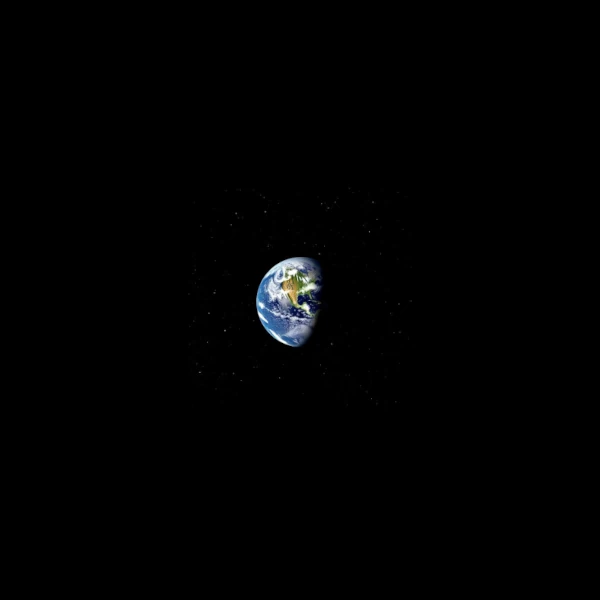
The Moon, our celestial companion that lights up our nights, seems so natural that we often forget its fundamental role in the balance of our planet. Yet, its absence would profoundly alter Earth as we know it. Our satellite is not just a poetic object of contemplation; it is a key player in climate stability, tidal cycles, and perhaps even the emergence of life.
Without the Moon, Earth would have become a world of extreme cycles, making life more difficult and evolution more unpredictable. The Moon is therefore a crucial actor in Earth's dynamic and biological systems.
The Moon's stabilizing effect comes from the combination of its mass and proximity. The tidal forces it exerts slightly slow Earth's rotation and create a torque that tends to keep the axis close to its current orientation. This stabilization allows seasonal cycles to remain relatively regular over geological timescales, favoring the evolution of complex life.
The Earth-Moon system acts as an axis stabilizer: it counteracts variations induced by the gravitational perturbations of the Sun and other planets.
George Darwin (1845-1912), son of Charles Darwin (1809-1882), a pioneer in Earth-Moon dynamics studies, showed that the energy exchange between Earth's rotation and lunar tidal forces acts as a damper, reducing oscillations in the rotational axis.
Additionally, the Moon's relatively high mass (≈ 1/81 that of Earth) is essential for its gravitational effects on our planet. In summary, the Moon's mass is the key to its stabilizing role. A much smaller moon, like those of other planets, would not have allowed life to evolve as we see it.
The Moon's gravitational influence stabilizes the tilt of Earth's rotational axis, currently at about 23.5 degrees. Without this stabilizing influence, Earth's axis would experience significant chaotic variations, oscillating between 0 and 85 degrees over geological timescales. These drastic changes would lead to extreme climate shifts, making seasons unpredictable and weather conditions much more violent.
An unstable obliquity combined with extreme seasons would have major consequences for biological evolution. Terrestrial and marine ecosystems would have had to adapt to abrupt climate variations, and the emergence of complex life as we know it would have been much more difficult.
The Moon is the primary driver of ocean tides. The most immediately observable effect would be on tides. Currently, tides are primarily caused by lunar attraction (about 70%), with the Sun contributing the remaining 30%. Without the Moon, the amplitude of tides would be reduced by about two-thirds. High tides would barely exceed 50 cm in most parts of the world, compared to several meters today.
Ocean circulation, thermal mixing, and climate regulation would be severely disrupted, reducing the stability of marine and terrestrial ecosystems.
The gradual slowing of Earth's rotation by lunar tidal effects has lengthened the day over billions of years. 4.5 billion years ago, an Earth day lasted only 6 hours. Without the Moon, this deceleration would be much slower. Today, our days would last about 8 hours instead of 24, and the year would have over 1000 days.
This accelerated rotation would significantly alter wind patterns and atmospheric circulation, with much stronger average winds and likely more extreme weather conditions.
Several scientists, including Jacques Laskar (1955-) from the Paris Observatory, have studied the Moon's influence on evolution. The climatic instability resulting from the Moon's absence could have delayed or even prevented the emergence of complex life forms. Tidal zones, considered possible cradles of life, would have been much less extensive and diverse.
| Factor | With Moon | Without Moon | Comment |
|---|---|---|---|
| Day Length | ≈ 24 h | ≈ 6-12 h | The Moon slows Earth's rotation through tidal effects |
| Tide Amplitude | 3-10 m depending on the area | 0.5-1 m, mostly solar | Lunar tides are dominant; their absence greatly reduces amplitude |
| Obliquity Stability | ±1.3° over millions of years | ±10-20° or more | Without the Moon, Earth's axis would oscillate much more, leading to extreme climates |
| Coastal Biodiversity | Rich | Reduced | Lunar tides create rich intertidal zones in biodiversity |
The absence of the Moon would not be limited to variations in tides or Earth's rotation. Its consequences would extend to phenomena difficult to imagine and would affect both geophysics and the biosphere.
According to Simon Lock (born 1970), an expert in planetary dynamics, the absence of the Moon would have made Earth comparable to Mars in terms of climate variability and axial instability.